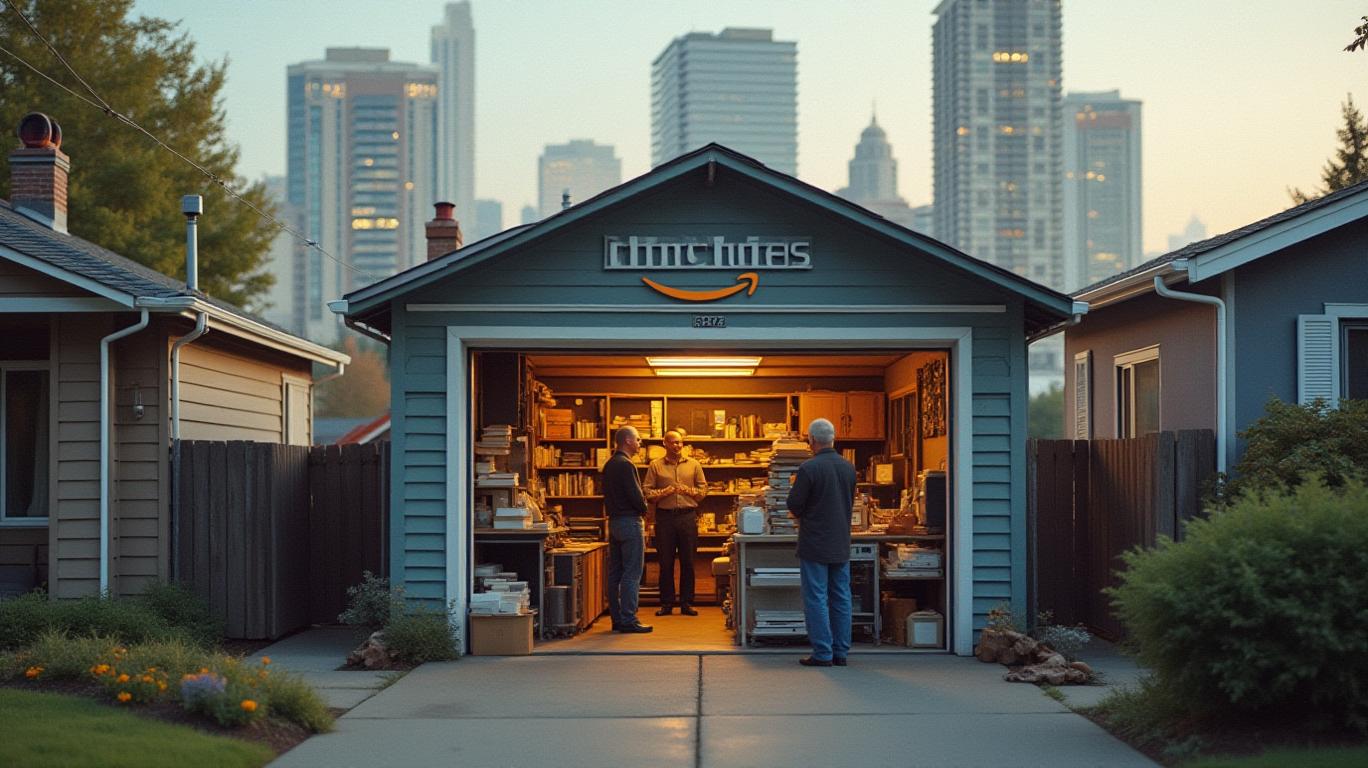Emulating Bezos’ Regret-Minimization Strategy: How to Spot the Next Amazon in AI and E-Commerce
In 1994, Jeff Bezos walked away from a six-figure hedge fund job to launch
, a “two-person bookstore in a garage.” His decision, driven by a “regret-minimization framework,” prioritized long-term potential over short-term comfort—a bet that would grow into a $2.6 trillion empire. Today, investors face a similar crossroads: identifying high-risk, high-growth tech sectors where compounding returns will eclipse near-term volatility. The next trillion-dollar markets lie in AI-driven e-commerce, logistics innovation, and global digital services. Here’s how to apply Bezos’ calculus to find tomorrow’s winners.
The Regret-Minimization Lens: Why Now is the Time to Act
Bezos’ strategy hinged on two principles:
1. Invest in irreversible trends, even if they’re misunderstood today.
2. Prioritize ventures solving problems for billions, not just millions.
Applied to 2025, this means targeting companies addressing global digital transformation. AI and e-commerce are at a inflection point: 92% of firms plan to boost AI spending over the next three years, while global e-commerce revenue is projected to hit $8.3 trillion by 2026. Yet volatility remains—the S&P 500 Tech sector has swung 20% in the past year. But as Bezos noted, “It’s early days for the internet of things. It’s early days for AI.”
Spotting the Next Amazon: Metrics for “Regret-Proof” Growth
To mirror Bezos’ success, investors must identify firms with Amazon-scale scalability—those that dominate critical infrastructure, invest aggressively in R&D, and serve massive, underserved markets. Key metrics include:
1. User Growth & Market Dominance
- Shopify (SHOP): Powers 2.8 million merchants globally, with headless commerce enabling rapid customization. Its Plus tier targets enterprises, mirroring Amazon’s early B2B pivot.
- BigCommerce (BIGC): Serves mid-to-large businesses, with 30%+ revenue growth in 2024. Its B2B features (custom pricing, quote management) target a $12.7 trillion market.
- Salesforce Commerce Cloud (CRM): Powers 30% of Fortune 500 retailers, with AI-driven personalization tools that boost conversion rates 20–30%.
2. R&D Investment & AI Integration
- Adobe Commerce (Magento Cloud): Leverages Adobe’s $3.3B/year AI spend to offer dynamic recommendations and composable architecture. Its AI-powered search cuts bounce rates by 40%.
- SAP Commerce Cloud (SAP): Integrates SAP’s Leonardo AI for inventory optimization, reducing stockouts by 25% for clients like L’Oréal.
- Alibaba Cloud (BABA): Hosts 100+ foundation models, including Qwen, which powers e-commerce chatbots and cross-border logistics.
3. Logistics & Global Reach
- Flexport (FSLY): Uses AI to streamline $12B in annual freight, cutting delivery times by 15%. Its platform connects 100k+ shippers and carriers, a logistical “Amazon” for global trade.
- DoorDash (DASH): Expands beyond food delivery to become a “digital concierge,” with AI-driven hyperlocal logistics serving 700k+ businesses.
The Regret of Inaction: Why Sitting Out is the Riskiest Bet
Bezos’ $232M net worth in 1994—reinvested into Amazon’s first servers—looks trivial today. But imagine the regret of an investor who dismissed his “garage” as too risky in 1994. The parallels are stark:
- Undervalued AI Infrastructure: Companies like NVIDIA (NVDA) power the “AI cloud,” but pure-play e-commerce platforms (e.g., Shopify) trade at 15x forward revenue—half Amazon’s peak.
- Logistics Disruption: Flexport’s stock trades at 40% below its IPO price, despite 30%+ revenue growth.
- Global E-Commerce Penetration: Only 18% of global retail is digital—leaving $20T in untapped markets.
The Playbook: Invest Like Bezos, Not Like a Day Trader
To avoid future regret, focus on firms with:
1. Network effects: Companies like Shopify, which grows more valuable as its ecosystem (payment gateways, app developers) expands.
2. Scalability at the margin: Adobe Commerce’s modular architecture reduces costs for clients as they grow.
3. Problem-solving at scale: Alibaba Cloud’s AI tools democratize e-commerce access for small businesses in emerging markets.
Conclusion: The Next $232 Billion Bet is Now
The next Amazon won’t be a bookstore—it’ll be an AI-driven logistics engine, a global commerce platform, or a cloud infrastructure leader. Investors who dismiss today’s volatility as “noise” will rue their hesitation in 2035. Emulate Bezos’ calculus: back ventures solving problems for billions, even if they’re misunderstood now. The regret of missing the next trillion-dollar market will far outweigh the fear of short-term dips.
Act now—or regret it forever.

Comments
No comments yet